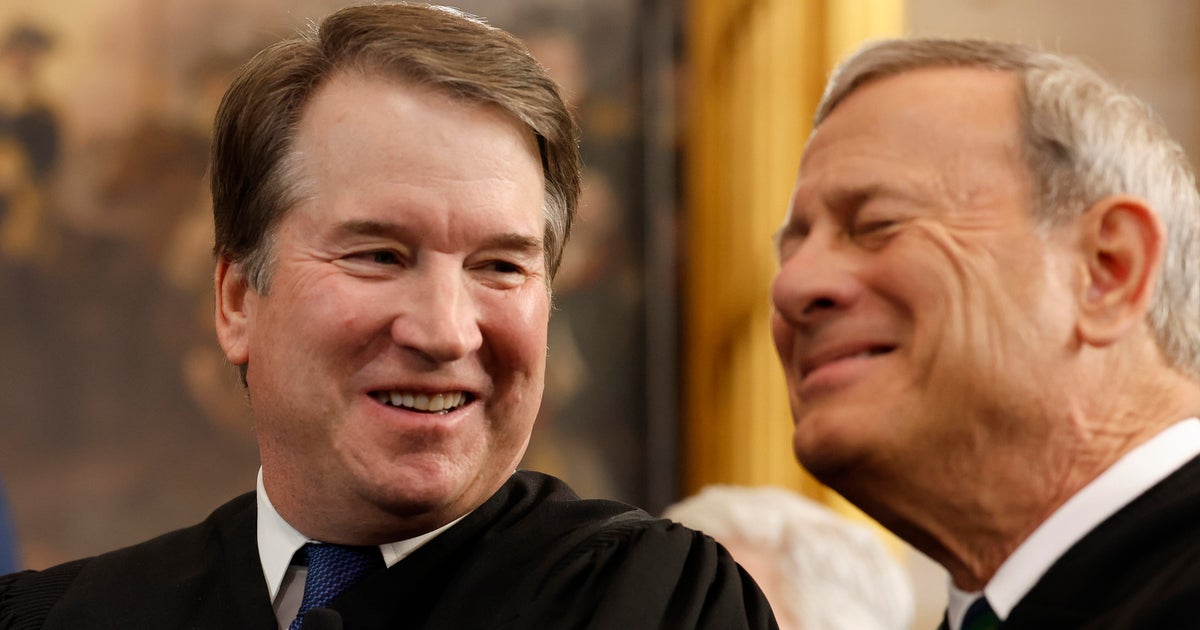The Supreme Court’s role in American politics is constantly under scrutiny, especially when dealing with emergency orders. Justice Brett Kavanaugh recently addressed the court’s approach to these high-stakes decisions, shedding light on the internal considerations and external criticisms. This article delves into Kavanaugh’s defense of the court’s procedures, the increasing reliance on executive orders, and the broader implications for the balance of power within the U.S. government. We will explore the nuances of Kavanaugh’s arguments, the dissenting voices, and what this all means for the future of judicial review.
Kavanaugh’s recent remarks offer a rare glimpse into the workings of the Supreme Court, particularly its handling of urgent appeals from the executive branch. As presidents increasingly utilize executive orders to bypass congressional gridlock, the judiciary finds itself at the center of legal challenges, tasked with determining the scope and limits of presidential power. This puts the Supreme Court in a pivotal position, making decisions that can have immediate and far-reaching consequences.
Kavanaugh Defends the Use of Emergency Orders
Justice Kavanaugh defended the Supreme Court’s method of handling a growing number of emergency appeals from the Trump administration. He stated that as presidents test the boundaries of their authority, the courts must respond accordingly. Speaking to a gathering of legal professionals in Kansas City, Missouri, Kavanaugh pointed out that presidents from both major parties have leaned more heavily on executive orders due to congressional inaction. This surge in executive action has naturally led to increased legal challenges, drawing the Supreme Court into the fray to decide whether new regulations can be enforced, at least temporarily, while these challenges are adjudicated.
Kavanaugh emphasized that the Supreme Court has generally sided with allowing President Trump’s significant executive orders to remain in effect during lower court reviews. Examples include orders related to national security and immigration policies. This approach has drawn criticism, with some arguing that the court should provide more detailed explanations for its decisions in these emergency cases.
“Presidents in both parties, stymied by inaction in Congress, have relied more on executive orders ‘to get things done.’” – Justice Brett Kavanaugh
The Court’s Response to Expanding Executive Power
Kavanaugh addressed criticisms concerning the Supreme Court’s explanations in emergency cases, noting that the court has increased its written explanations compared to previous years. He also mentioned internal adjustments made over the last five to six years to enhance decision-making accuracy. These adjustments include scheduling emergency oral arguments, as seen in a recent case involving voting rights.
He expressed his preference for a more thorough process, citing instances where he advocated for the court to resolve underlying issues before they navigated through lower courts. This stance reflects a desire for the Supreme Court to provide clearer guidance and resolve critical legal questions more swiftly. However, balancing expediency with thorough judicial review remains a significant challenge.
Internal Dynamics and Collegiality Among Justices
During his conversation with Judge Sarah Pitlyk, Kavanaugh touched on the collegial environment within the Supreme Court. He shared that despite disagreements, the justices engage thoughtfully on difficult issues, viewing differing opinions as a sign of strength. Kavanaugh emphasized the strong relationships among the justices, stating that they respect each other and consider each other patriots.
This sentiment echoes similar remarks made by Justice Elena Kagan, who spoke at the 9th Circuit Court of Appeals, urging caution in handling the emergency docket. Kagan acknowledged finding some court decisions frustrating but affirmed her belief in the good faith of her colleagues. Both justices underscore the importance of maintaining civility and respect within the court, even amidst profound disagreements.
Facing Criticism and Upholding the Judicial Role
Kavanaugh acknowledged the criticism directed at the court, recognizing that it is an inherent aspect of the job. Drawing an analogy to sports referees, he noted that justices must develop a thick skin and accept that criticism comes with the territory. He humorously questioned whether anyone has ever complimented the referees after their team lost, illustrating the often thankless nature of judicial decision-making.
This perspective highlights the challenging position of Supreme Court justices, who must make impartial decisions while being subjected to intense public and political scrutiny. Kavanaugh’s remarks suggest a pragmatic acceptance of this reality and a commitment to fulfilling his role despite external pressures.
Broader Implications for the Supreme Court and Legal System
The increasing number of emergency appeals and executive order challenges indicates a growing strain on the Supreme Court and the broader legal system. As presidents continue to push the boundaries of executive power, the courts will inevitably play a crucial role in defining those boundaries. This dynamic underscores the importance of a balanced and well-reasoned judicial approach to ensure that constitutional principles are upheld.
Furthermore, the internal discussions and adjustments within the Supreme Court, as highlighted by Kavanaugh, reflect an ongoing effort to adapt to these evolving challenges. The court’s ability to maintain collegiality and engage in thoughtful deliberation, even amidst disagreement, will be essential for preserving its legitimacy and effectiveness in the years to come.
Conclusion: Navigating the Future of Judicial Review
Justice Kavanaugh’s defense of the Supreme Court’s handling of emergency orders provides valuable insight into the complexities of judicial review in an era of expanding executive power. His remarks underscore the challenges the court faces in balancing expediency with thorough deliberation, and the importance of maintaining collegiality amidst profound disagreements. As the number of executive order challenges continues to rise, the Supreme Court’s role in safeguarding constitutional principles will only become more critical.
The future of judicial review will depend on the court’s ability to adapt to these evolving challenges, while upholding its commitment to impartiality and reasoned decision-making. Kavanaugh’s perspective offers a glimpse into the internal considerations and external pressures that shape the Supreme Court’s approach to these high-stakes decisions, highlighting the ongoing effort to navigate the delicate balance between executive authority and judicial oversight.

Leave a Reply